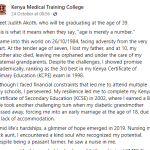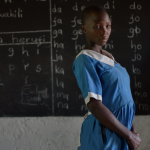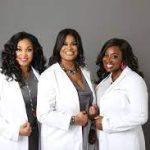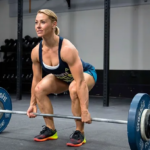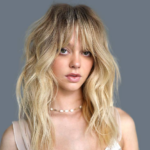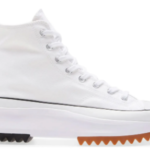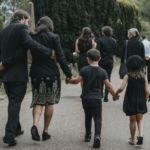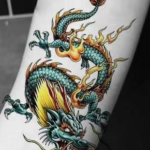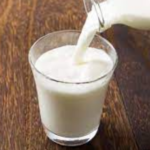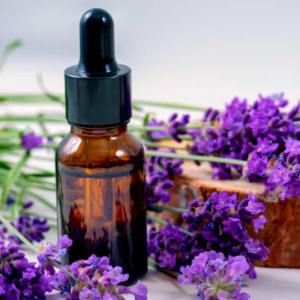
Did you know that despite being more common among teens and young adults, acne also affects people in their 30s, 40s, 50s, and even 60s? I thought you should know!
What’s Acne?
Acne is a skin condition that often starts in the teenage years and might linger on till the early thirties. In some people though, the skin condition might develop in the fourth and fifth decade of life. That’s called Adult Onset Acne. This type of breakout is common among women during menopause. And as you might have guessed, it’s all because of the associated hormonal changes. 
The typical manifestations of this skin condition include whiteheads, blackheads, inflammation, and pimples.
Quick Read: Beauty Tips for Teenage Girls
The causes of acne span different factors. Some of these include pubertal hormonal changes, bacterial infection, excessively oily skin, oily skin products, etc.
Though the condition normally resolves with age, the associated distress and personal image issues might be very damaging. Luckily, there are many treatment options for pimples.
In this guide, we’ll discuss acne as a condition, its symptoms, and the recommended treatment options, both pharmacological and non-pharmacological.
Acne Quick Facts!!!
i). Workouts can actually worsen acne on your back and chest.
ii). Skin scrubbing worsens pustules, pimples, and zits.
iii). Breakout treatment takes an average of 6 to 8 weeks before you can see the results.
iv). Toothpaste has no place in the treatment of zit. So, don’t even consider applying some on your face.
Symptoms/ Types of Acne
- Skin nodules
- Cystic skin lesions (pus-filled lumps)
- Pimples/ pustules
- Papules
- Blackheads (open clogged skin pores)
- Whiteheads (closed clogged skin pores)
Quick Read: First aid tips for minor injuries
Here are some common causes of this skin condition:
- Sebum over-secretion
- Hormonal changes associated with teenage
- Clogged hair follicles
- Hypersensitivity reaction causing inflammation
- Bacterial infection
Also Read: Best Makeup Tips for Teenage Girls
Risk Factors
These are the factors that can predispose one to develop pimples and zits at whichever age.
- Teenage years
Zits and pimples normally begin in the early or mid teens. The reason for this could be the pubertal hormonal changes associated with this developmental stage.
Quick Read: How to prevent hair loss due to alopecia
- Oily type of skin
Often, people with oily type of skin are at a higher risk of developing acne compared to persons with dry type of skin.
- Hormonal changes
Apart from puberty, significant hormonal changes may also be witnessed during pregnancy, menopause, or in persons using certain medications. These changes may result in zits and pimples alongside other health conditions.
- Family History
Acne can also follow bloodlines. Meaning, if your parent(s) has the conditions, then chances are that you might also develop it. Basically, that’s an hereditary condition that’s ingrained in the genes.
- Oily skincare and hair products
Such products are likely to clog hair follicles leading to bacterial infraction and related inflammation and skin soreness.
Quick Read: Tips on the Best Face Scrubs and Exfoliators for Teens
Types of Acne Skin Scars
There are a couple of different types of skin scars. The following types are caused by acne:
These types of skin scars are characteristically thick and red in color. They are also itchy and painful at times.
These are characterized by slightly raised skin lumps. They are associated with an increase in the synthesis and turnover of skin fibroblasts during the healing phase of the pimples, zits, or pustules.
Quick Read: Health benefits of lavender oil
In this skin disease, antibiotics are used to manage skin bacterial load and related inflammation. These drugs can be used alongside retinoic acid derivatives at the beginning of the treatment. However, as time progresses, your dermatologist will recommend a different combination.
These types of scars are the exact opposite of the hypertrophic type. They are characterized by skin dents due to diminished skin fibroblast synthesis.
Quick Read: Anti-Dandruff Hair Oils for Women and Men
Treatment for Acne
Which are the treatment options for acne?
There are different treatment methods for this skin disease. Broadly, these can be classified as follows:
- Pharmacological/ medical treatment
- Home-based/ natural remedies
A.) Pharmacological/ medical Treatment options
i). Topical Agents
Pustules, zits, or pimples can be managed with different topical medications. These meds shouldn’t be used alone in monotherapy. For the best results, they should be combined with other treatment methods. Consult your skin doctor for more info on the right combination regimens for your face. Some of these include:
- Retinoic acid derivatives
Drugs in this category contain retinoic acid, tretinoin, or its derivatives. They are effective against moderate acne.
Examples: Tretinoin (Avita, Retin -A), Tazarotene (Tazorac, Avage), and Adapalene (Differin)
- Antibiotics
Examples: clindamycin + benzoyl peroxide (benzaclin, duac), erythromycin + benzoyl (benzamycin)
- Azelaic acid and its derivatives + salicylates
Creams or gels containing Azelaic acid can be used in mild to moderate acne. Also, these products can be used to improve acne-related skin discoloration.
Examples: Azalex, Finacea
- Dapsone
This is a common drug compound used in the management of different inflammatory skin conditions including pimples, zits, and pustules.
Example: Aczone
ii). Oral Agents
This category of medications is very effective against acne. They are prescription-only medications and are administered orally. Typical oral medications used against zits and pimples include:
- Antibiotics
They are super effective against mild to moderate acne. As the name suggests, these drugs keep this skin disease in check by reducing the associated bacterial load.
Examples:
Tetracyclines (minocycline, doxycycline), macrolides (erythromycin, azithromycin)
Tip! Some antibiotics have serious adverse effects and can only be used strictly under a doctor’s strict observation.
- Combined oral contraceptives
These medicines can only be used by ladies because they normally target estrogen and progestin hormones. Only 4 combination birth control pills have been approved for acne treatment.
Examples: Ortho Tri-Cyclen 21, Estrostep, Beyaz, and Yaz
- Anti-androgens
Some types of acne have been associated with elevated levels of androgen hormones. In such cases, antiandrogens may be prescribed.
Examples: spironolactone (Aldactone)
- Vitamin A derivative (Isotretinoin)
Can be used in the treatment of moderate to severe acne. You may want to note that this medication is still under strict FDA surveillance for potential side effects.
Examples: Amnesteem, Claravis
Acne Treatment in Children
As aforementioned, Acne normally starts in the teenage years of life. In some people, it might begin later in life (maybe in their twenties).
In the case of teens, the treatment options should be carefully selected in order to minimize the side effects. In that regard, the American Academy of Dermatology recommends select meds for use in Acne treatment in children.
Examples: Topical benzoyl peroxide, adapalene & tretinoin
Quick Read: 10 Amazing Benefits of Lavender Oil
B.) Other Therapies
Apart from pharmacological methods, acne can also be managed with other therapies. These can be implemented separately or in combination with the drugs. A couple of therapies have proven effective in the management of pimples, zits, and pimples. They include:
- Chemical Peeling
This treatment method is best used in managing mild to moderate acne. The chemical peeling procedure only offers a temporary fix for this skin condition. As such, one may have to undergo the procedure severally. A number of compounds are used in chemical peeling. They include glycolic acid, salicylic acid, and retinoic acid.
- Drainage and Extraction
This is another temporary fix that might improve your appearance. It involves the use of special tools to remove whiteheads and blackheads.
Tip! Drainage and extraction method of acne treatment causes skin scars. You might want to consider other options before resorting to this.
- Intravenous Steroid Therapy
Simply put, this therapy entails the injection of steroid medication to manage various acne symptoms. It’s been found to be very effective and improves the overall facial appearance.
C.) Alternative Acne Medications
A number of alternative medicines are currently used for the treatment of pimples, pustules, and zits. These two have shown remarkable success.
- Oral Hansen CBS (Brewer’s yeast)
- Tea tree gels and lotions
D.) Home Remedies
These are normally the mainstay of acne management, besides the drugs. Here are some proven lifestyle and home therapies that you can use on your skin.
- Skincare products containing alpha-hydroxy acids, glycolic acid, salicylic acid, or benzoyl peroxide
- Use water-based, non-comedogenic skin products
- Wash face regularly with a gentle cleanser (Cetaphil, Vanicream)
- Keep off facial scrubs, masks, and astringents.
- Avoid oily cosmetics, greasy or oily hair products, and acne concealers.
- Non-oily skin moisturizers + sunscreens
- Avoid picking, rubbing, or squeezing acne spots.
Quick Read: Rheumatoid Arthritis Causes and Treatment
Here are some things you need to know about Acne.


